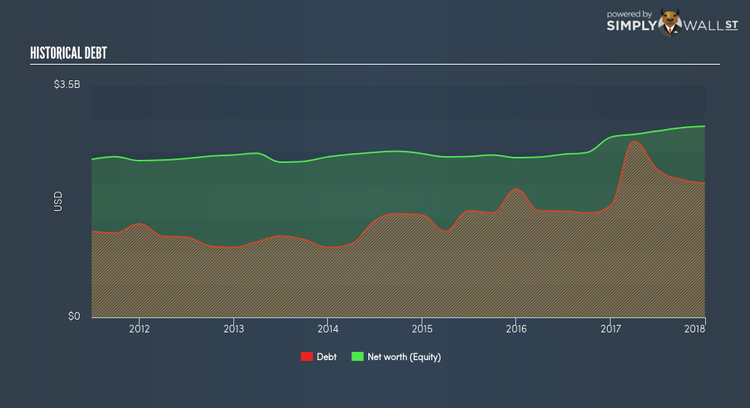Should You Be Concerned About Hancock Holding Company’s (NASDAQ:HBHC) Liquidity?

Hancock Holding Company’s (NASDAQ:HBHC) profitability and risk are largely affected by the underlying economic growth for the region it operates in US given it is a small-cap stock with a market capitalisation of US$4.53B. A bank’s cash flow is directly impacted by economic growth as it is the main driver of deposit levels and demand for loans which it profits from. Following the Financial Crisis in 2008, a set of reforms termed Basel III was enforced to bolster risk management, regulation, and supervision in the financial services industry. These reforms target banking regulations and intends to enhance financial institutions’ ability to absorb shocks resulting from economic stress which could expose banks like Hancock Holding to vulnerabilities. Its financial position may weaken in an adverse macro event such as political instability which is why it is crucial to understand how well the bank manages its risks. Sufficient liquidity and low levels of leverage could place the bank in a safe place in case of unexpected macro headwinds. Today we will be measuring Hancock Holding’s financial risk position by looking at three leverage and liquidity metrics. Check out our latest analysis for Hancock Holding
Why Does HBHC’s Leverage Matter?
Banks with low leverage are exposed to lower risks around their ability to repay debt. A bank’s leverage can be thought of as the amount of assets it holds compared to its own shareholders’ funds. While financial companies will always have some leverage for a sufficient capital buffer, Hancock Holding’s leverage ratio of 9x is significantly below the appropriate ceiling of 20x. This means the bank exhibits very strong leverage management and is well-positioned to repay its debtors in the case of any adverse events since it has an appropriately high level of equity relative to the debt it has taken on to remain in business. If the bank needs to firm up its capital cushion, it has ample headroom to increase its debt level without deteriorating its financial position.
How Should We Measure HBHC’s Liquidity?

As abovementioned, loans are quite illiquid so it is important to understand how much of these loans make up the bank’s total assets. Usually, they should not be higher than 70% of total assets, which is consistent with Hancock Holding’s state given its ratio of 68.73%. This is a reasonable ratio and suggests that slightly over half of the bank’s total assets are tied up in the form of illiquid loans, striking an appropriate balance between liquidity and interest income.
Does HBHC Have Liquidity Mismatch?
HBHC profits by lending out its customers’ deposits as loans and charge an interest on the principle. These loans tend to be fixed term which means they cannot be readily realized, conversely, on the liability side, customer deposits must be paid in very short notice and on-demand. The disparity between the immediacy of deposits compared to the illiquid nature of loans puts pressure on the bank’s financial position if an adverse event requires the bank to repay its depositors. Compared to the appropriate industry loan to deposit level of 90%, Hancock Holding’s ratio of over 84.42% is sensibly lower and within the safe margin, which places the bank in a relatively safe liquidity position given it has not excessively lent out its deposits and has maintained a suitable level for compliance.
Next Steps:
Hancock Holding passes all of our liquidity and leverage checks which shows it is prudent in managing those factors. This gives us confidence in the operational side of the business, an important aspect to consider before investing in the stock. High liquidity and low leverage places the bank in an ideal position to repay financial liabilities in case of adverse headwinds. We’ve only touched on operational risks for HBHC in this article. But as a stock investment, there are other fundamentals you need to understand. I’ve put together three relevant aspects you should further examine:
Future Outlook: What are well-informed industry analysts predicting for HBHC’s future growth? Take a look at our free research report of analyst consensus for HBHC’s outlook.
Valuation: What is HBHC worth today? Has the future growth potential already been factored into the price? The intrinsic value infographic in our free research report helps visualize whether HBHC is currently mispriced by the market.
Other High-Performing Stocks: Are there other stocks that provide better prospects with proven track records? Explore our free list of these great stocks here.
To help readers see pass the short term volatility of the financial market, we aim to bring you a long-term focused research analysis purely driven by fundamental data. Note that our analysis does not factor in the latest price sensitive company announcements.
The author is an independent contributor and at the time of publication had no position in the stocks mentioned.

